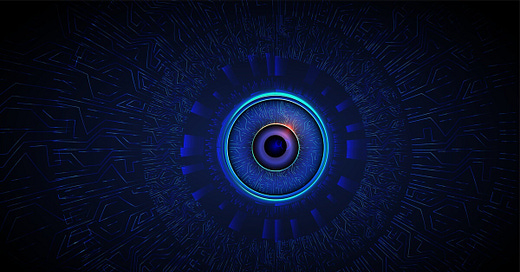The rise of Edge Face Recognition in 2023
Edge Face Recognition is opening the door to a brighter future
Edge Face Recognition technology uses machine learning algorithms and AI to identify and authenticate individuals based on their facial features.
Unlike traditional face recognition systems, which rely on a centralized database and cloud computing resources, Edge Face Recognition is designed to operate at the ‘edge’ of the network, closer to the data source.
For example, Edge-based Face Recognition can be integrated into security camera systems, allowing them to instantly identify and flag potential threats or unauthorized individuals in real time.
This is particularly useful in high-security areas such as airports, government buildings, and financial institutions, where the ability to quickly and accurately identify individuals is critical.
But Edge Face Recognition is taking off for many other reasons in 2023, namely for its convenience and personalization capabilities.
For example, face recognition at the Edge is being used to replace traditional identification methods, such as passwords and physical identification cards, making it easier and faster for people to access their devices, homes, and workplaces.
Meanwhile, on the personalization front, Edge Face Recognition technology creates tailored experiences, such as targeted marketing, personalized recommendations, and customized entertainment options.
This year, Edge-enabled face recognition will become even more sophisticated and widespread, with a wide range of applications in various industries such as healthcare, retail, and education.
This popularity increase is taking place because Edge Face Recognition generates faster, more accurate results. This is because data is processed locally and avoids any latency that comes with relying on the cloud.
Edge Face Recognition also provides greater privacy and security as data isn’t transmitted over the internet. This helps prevent potential security breaches and hacking attempts, which are of growing concern in today's digital landscape.
Importantly, advances in hardware and software have also made it more feasible to deploy Edge Face Recognition on small, low-power devices, such as smartphones and IoT gadgets.
This has enabled a wider range of use cases, making highly accurate Edge Face Recognition more accessible to the general public.
Overall, Edge Face Recognition technology has the potential to revolutionize the way we interact with technology and each other, making our world more secure, efficient, and personalized.
Find out more in the articles below.
Your face is your boarding pass
Delta Airlines has announced a new initiative, Delta Sync, which is expected to kick off the era of face recognition technology in the airline industry.
The program involves replacing boarding passes with face recognition, enabling customers to use their face as a hands-free credential without carrying physical documents.
2023: The Year of Widespread Facial Recognition Adoption
Safety, efficiency, and ethics
Face recognition technology, including Edge-based face recognition, is increasingly considered a superior security option over traditional methods like ID cards and passwords.
As these technologies are adopted in various industries for safety and efficiency, their potential is becoming clear. However, ethical considerations must also be taken into account.
According to the article below, face recognition technology is expected to be widely adopted in 2023, but industry education and adherence to regulation will be the key to maximizing its benefits.
What is Facial Recognition - The 2023 Ultimate Guide for Facial Recognition Technology
Smile for security
The article below discusses how face recognition technology can benefit businesses by integrating with employee timeclocks, POS systems, and access control systems.
The article covers key considerations for adopting AI-powered face recognition. It suggests features to look for in a system, such as whether it relies on the Edge or cloud for data storage and processing.
Building a Security & Surveillance System with Facial Recognition
Some extra resources
The great debate: Edge vs cloud computing
As companies increasingly move applications to the cloud, the debate between Edge and cloud computing persists.
70% of organizations already have one cloud-based application, but experts bet on the growing popularity of Edge computing.
While both Edge and cloud computing have their advantages and disadvantages, this article argues that it’s important for organizations to understand the differences between the two to choose the platform that best suits their needs.
Edge Computing Vs Cloud Computing: Key Differences to Know
Big data, big opportunities
This article discusses how businesses face challenges in managing and harnessing the power of big data due to traditional computing limitations.
Edge computing provides an appealing and effective solution for businesses looking to get the most from their big data. However, companies must research and plan appropriately before undertaking any migration or architectural changes.
How Edge Computing is Addressing Business Data Challenges
Transforming medicine with Edge computing
The following article discusses the challenges of managing and analyzing the vast medical data sensors collect.
Here, the authors highlight the importance of Edge computing in improving network response times and increasing decentralization and security, especially in the face of growing privacy and security concerns with the widespread deployment of IoT devices.
Machine-Learning-Based IoT–Edge Computing Healthcare Solutions
Xailient’s newest article
In our latest blog, What is Edge Computer Vision, and How Does it Work?, we explore how Edge computing is revolutionizing traditional computer vision techniques, allowing the processing and analysis of visual data at the edge of the network.
Edge computing offers unique benefits, including faster processing, greater security, and real-time insights, making it an essential tool for computer vision applications.
Thanks for reading,
See you next week!




